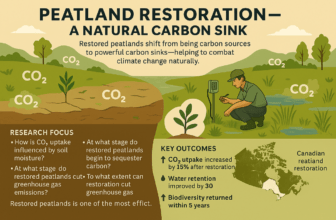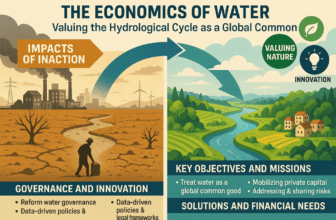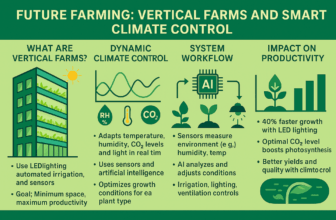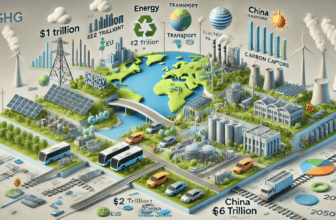Mitigating Immune-Mediated Diseases Linked to Climate Change: Goals, Challenges, and Investment Needs for 2050
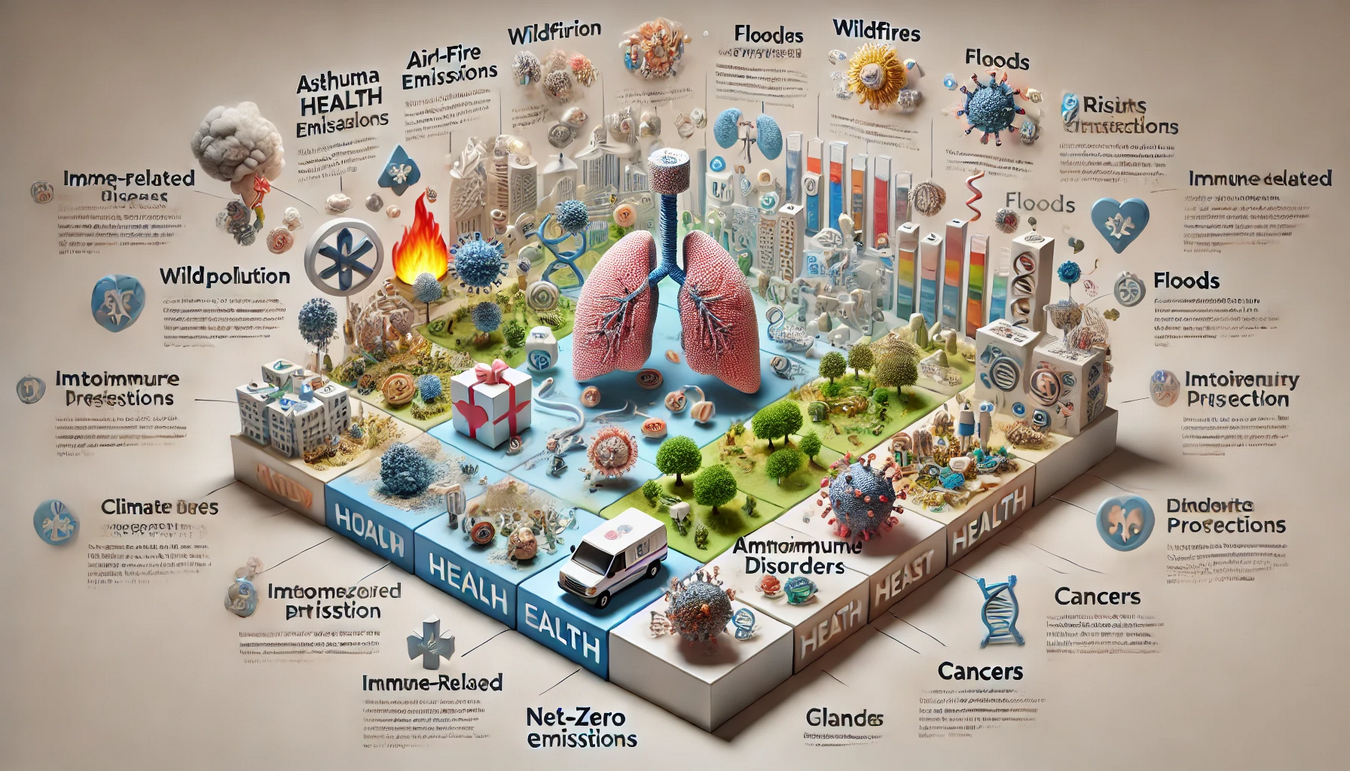
Introduction
Climate change represents one of the most complex and pervasive crises humanity has ever faced. The environmental hazards caused by climate change—including air pollution, rising temperatures, wildfires, floods, dust storms, and biodiversity loss—directly affect human health, particularly the immune system’s function. Immune dysregulation triggered by climate-induced stressors leads to an increase in immune-mediated diseases such as asthma, allergies, autoimmune disorders, and cancers. The impacts of climate change are interconnected, affecting not only physical health but also mental health, livelihoods, and the stability of communities around the world. The consequences of inaction are profound, with millions at risk of food and water insecurity, displacement, and increased vulnerability to infectious diseases.
This document focuses on the goals necessary to mitigate the impact of climate change and implement adaptation measures to protect public health. It also explores the contradictions that hinder effective action and sustainability, providing a detailed analysis of the investment requirements necessary to address climate change and alleviate immune-mediated diseases. By understanding the challenges and opportunities, we can develop a comprehensive strategy that balances economic development, environmental sustainability, and social equity.
Goals
The mitigation and adaptation measures required to address climate change and reduce immune-mediated diseases revolve around several central goals:
1. Net-Zero Emissions by 2050 (CO2 = 0)
Achieving net-zero carbon emissions by 2050 is critical to prevent the global temperature from rising beyond 1.5°C. The urgency of this goal cannot be overstated, as even slight temperature increases can have drastic effects on ecosystems, sea levels, and weather patterns.
Decarbonization measures include the shift to renewable energy sources like solar and wind power, as well as the adoption of carbon-neutral technologies in energy production and industry. Countries must invest in new energy infrastructure to meet this target. This transformation will require substantial policy shifts, regulatory frameworks, and international cooperation to achieve an equitable energy transition.
According to the UN, an estimated $1.8 trillion annually in global investments is required to reach net-zero emissions by 2050 and avoid catastrophic climate impacts. Investments must focus not only on renewable energy infrastructure but also on research and development of innovative carbon capture technologies and energy storage solutions to enhance the resilience and reliability of renewable energy systems.
2. Biodiversity Protection and Restoration
The goal is to protect and restore biodiversity, including forests, wetlands, and grasslands, which play a crucial role in climate stabilization and human health. Biodiversity acts as a buffer against climate extremes, supports food and water security, and provides essential ecosystem services that are critical to human survival.
The IPCC estimates that $500 billion per year is needed for reforestation and biodiversity preservation until 2030 to ensure a sustainable climate and prevent ecosystem collapse. This includes restoring degraded landscapes, protecting endangered species, and implementing sustainable land management practices that prioritize ecosystem health.
Maintaining biodiversity reduces zoonotic disease transmission and supports ecological balance, which in turn helps protect the immune system’s functioning. Diverse ecosystems are better equipped to withstand environmental changes, reducing the likelihood of disease outbreaks that can result from disrupted habitats and species migration. The preservation of biodiversity also supports traditional medicinal practices and the discovery of new pharmaceuticals.
3. Sustainable Food Systems and Agricultural Practices
Transforming food production systems involves reducing the use of chemical fertilizers and pesticides, promoting regenerative agriculture, and integrating livestock into holistic farming practices. Sustainable agricultural practices help sequester carbon in the soil, reduce greenhouse gas emissions, and enhance soil fertility.
The FAO estimates that $300–350 billion annually is needed to reform agricultural practices and establish sustainable food systems by 2050. This investment reduces the carbon footprint of agriculture and safeguards human health from exposure to harmful chemicals. It also involves supporting smallholder farmers and providing access to climate-resilient seeds and technologies that can increase productivity while minimizing environmental harm.
Shifting agricultural practices and promoting plant-based diets are linked to stronger immune systems and lower incidences of chronic diseases. Plant-based diets reduce the demand for resource-intensive animal agriculture, which is a significant source of methane emissions. Additionally, increasing awareness and access to nutritious, plant-based foods can lead to better public health outcomes and reduced healthcare costs associated with diet-related diseases.
4. Urban Adaptation and Green Space Expansion
Expanding green spaces and adapting cities to the impacts of climate change, including heatwaves and floods, is essential to improve urban living conditions and protect people from environmental hazards. Urban areas are particularly vulnerable to climate change due to high population densities, impervious surfaces, and limited access to natural spaces.
Globally, an estimated $100 billion annually is required to adapt cities and expand green spaces. These investments aim to increase the resilience of urban areas, including flood-proof infrastructure, improved water management systems, and the creation of urban green belts. Green spaces not only provide recreational areas but also help mitigate the urban heat island effect, improve air quality, and support mental well-being.
Expanding urban green spaces can reduce air pollution, provide healthier environments, and lower the incidence of respiratory and immune-mediated diseases. Green roofs, vertical gardens, and community parks are examples of nature-based solutions that can be integrated into urban planning to enhance the quality of life for city dwellers. Investments in urban adaptation also contribute to social cohesion by providing communal spaces that bring people together, fostering a sense of community and resilience.
Contradictions
Despite the established goals for mitigating climate change and adapting to its health impacts, several contradictions arise, complicating the implementation of these solutions. These contradictions involve economic, social, and environmental trade-offs, highlighting the complexity of addressing climate change in a way that is both effective and equitable.
1. Economic Growth vs. Climate Change Mitigation
Economic growth, especially in many developing countries, remains heavily dependent on fossil fuels. Achieving net-zero emissions would require massive restructuring of industrial and energy sectors, potentially stifling economic growth. The challenge lies in decoupling economic growth from carbon emissions while ensuring that economic opportunities are not compromised.
While reducing carbon emissions could improve health outcomes by reducing pollution-related diseases, economic downturns triggered by this transition may limit the ability to fund public health systems, exacerbating health disparities. Policymakers must balance economic development with environmental stewardship, ensuring that the benefits of decarbonization are distributed equitably and do not disproportionately impact vulnerable populations.
2. Developing vs. Developed Nations
Developed countries, historically responsible for the bulk of greenhouse gas emissions, have more resources to invest in climate resilience and healthcare. Developing nations, despite contributing less to climate change, are disproportionately affected and lack sufficient funding for mitigation. This imbalance creates significant challenges for global cooperation, as developing countries demand climate finance and technology transfers to support their adaptation efforts.
The unequal distribution of resources exacerbates global health inequities, as developing nations experience higher rates of climate-related illnesses, such as respiratory diseases and infectious diseases, but lack adequate healthcare infrastructure to address these crises. Addressing this contradiction requires international collaboration, including financial commitments from developed countries to support adaptation and mitigation efforts in vulnerable regions. Bridging the gap between developed and developing nations is crucial to fostering global solidarity and ensuring that all countries can participate in climate action.
3. Sustainable Agriculture vs. Food Security
While sustainable agricultural practices reduce environmental impact and improve long-term health, they may initially result in lower food production, creating concerns about global food security. The transition to sustainable farming methods requires time, resources, and training, which may not be readily available to all farmers, particularly in low-income areas.
Reducing the use of chemical fertilizers and pesticides would protect the immune system from harmful substances linked to autoimmune diseases and allergies. However, insufficient food production could lead to malnutrition, particularly in low-income regions. It is essential to develop strategies that balance the need for sustainable practices with the necessity of ensuring food security, such as using agroecological approaches that enhance productivity without compromising environmental health.
4. Green Energy Transition and Social Justice
The transition to renewable energy, while essential for reducing carbon emissions, may disproportionately affect lower-income populations. Energy prices could rise during the transition, and fossil fuel-dependent regions could experience widespread job losses. Ensuring a just transition requires policies that provide retraining programs, social safety nets, and targeted investments in communities that are most affected by the shift away from fossil fuels.
Economic inequality exacerbated by rising energy costs may limit access to healthcare for vulnerable populations. Additionally, job losses in fossil fuel industries could reduce household incomes, further hindering access to medical care and exacerbating health disparities. Policymakers must ensure that the transition to green energy is inclusive, providing opportunities for all segments of society to benefit from the new green economy and mitigating the negative impacts on disadvantaged communities.
5. Technological Solutions vs. Natural Solutions
Technological solutions can be expensive, experimental, and difficult to scale, whereas natural solutions are proven to enhance climate resilience but require more time to take effect. The reliance on technological fixes, such as carbon capture and storage (CCS), may divert attention and funding away from simpler, nature-based solutions that have co-benefits for biodiversity and human health.
If technological solutions fail to deliver the expected carbon reductions, continued exposure to high pollution levels could exacerbate chronic illnesses such as asthma, autoimmune diseases, and cancer. It is crucial to adopt a balanced approach that incorporates both technological and nature-based solutions, recognizing the value of ecosystems in regulating climate and supporting human health. Policymakers should prioritize investments in reforestation, wetland restoration, and sustainable land use practices as part of a comprehensive strategy to mitigate climate change.
Investments in Numerical Terms
Significant investments are required to meet the goals for climate change mitigation and adaptation. The following are the investment estimates necessary to achieve the outlined goals:
- Net-Zero Emissions by 2050: The UN estimates that $1.8 trillion annually is needed globally to achieve net-zero carbon emissions by 2050. This includes investments in renewable energy infrastructure, energy efficiency measures, and carbon capture technologies.
- Biodiversity Protection and Restoration: The IPCC estimates that $500 billion per year is necessary to restore ecosystems and protect biodiversity, preventing ecological collapse and its associated health impacts. Investments should focus on reforestation, conservation efforts, and the establishment of protected areas to safeguard critical habitats.
- Sustainable Food Systems: The FAO projects that $300–350 billion annually will be required to implement sustainable agricultural practices by 2050. This includes investments in agroecology, regenerative farming, and support for smallholder farmers to build resilience to climate impacts.
- Urban Adaptation and Green Space Expansion: Urban resilience efforts, including flood-proof infrastructure and expanded green spaces, require an estimated $100 billion annually on a global scale. These investments will enhance the adaptive capacity of cities, reduce heat stress, and improve the overall quality of life for urban residents.
Conclusion
Mitigating immune-mediated diseases caused by climate change and its environmental hazards demands coordinated global efforts and substantial investments. While the goals of reducing carbon emissions, protecting biodiversity, implementing sustainable agricultural practices, and adapting cities to climate impacts are clear, significant contradictions arise between economic development, social equity, and environmental sustainability. Achieving these goals will require addressing these contradictions through international cooperation, policy reforms, and equitable investment in public health and climate resilience.
Investing in these initiatives is not only crucial for protecting the planet but also for safeguarding human health and reducing the burden of immune-mediated diseases in a changing climate. Moreover, a successful response to climate change will necessitate transformative changes across all sectors of society, requiring commitment from governments, the private sector, and individuals alike. Only through collective action can we build a future that is resilient, equitable, and healthy for all.






